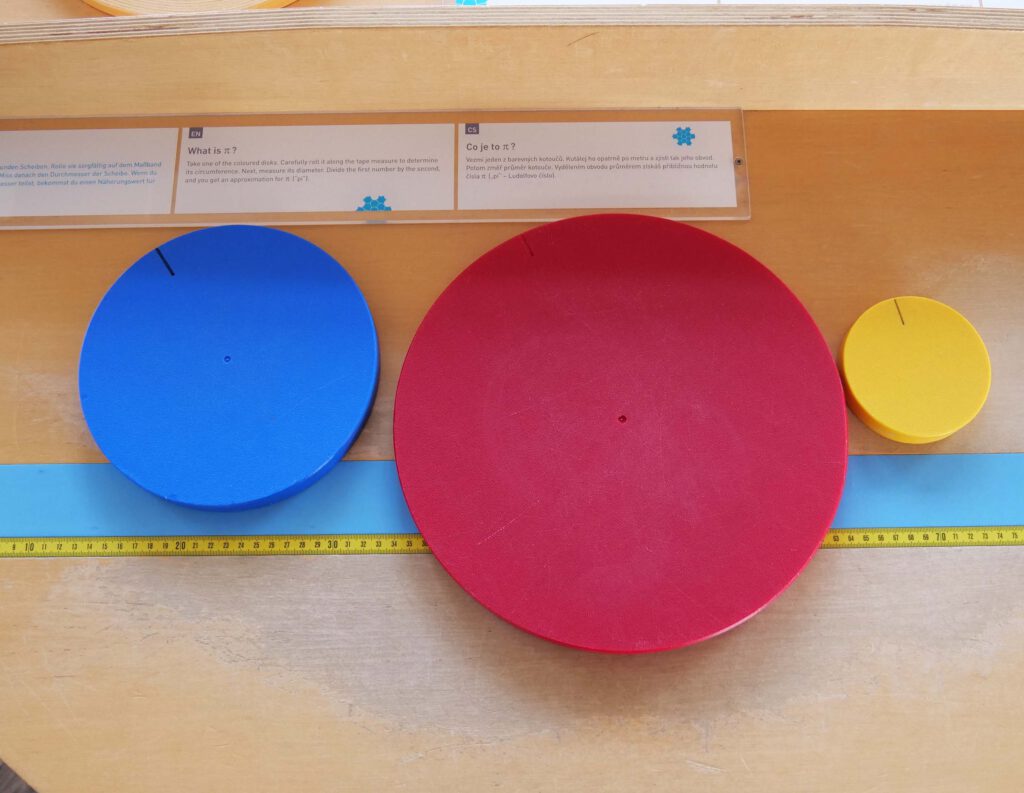The circle number π
The experiment on the circle number ![]() (“Pi”) in Maths Adventure Land shows that the date of birth of any visitor can be found in the sequence of digits
(“Pi”) in Maths Adventure Land shows that the date of birth of any visitor can be found in the sequence of digits ![]() and in which position.
and in which position.
If, for example, 14 March 1941 is the date of birth of that visitor, they should enter the sequence of digits 140341. The result can be read on the screen “in seconds“: This sequence of digits appears for the first time in the decimal expansion of ![]() at the 976,229th position.
at the 976,229th position.



![Rendered by QuickLaTeX.com \[S_N=\sum_{n=0}^N{\frac{1}{16^n}\left(\frac{4}{8n+1}-\frac{2}{8n+4}-\frac{1}{8n+5}-\frac{1}{8n+6}\right)}\]](https://erlebnisland-mathematik.de/wp-content/ql-cache/quicklatex.com-ef06d0aeb963fd2867d2d9796ad9aa0b_l3.png)
